Pick A Thanksgiving Food and Get a Book Recommendation
Thanksgiving, the best holiday if you love food, is finally here. All month we’ve been drooling over pictures of the perfect Thanksgiving dishes. And, like all holidays, Thanksgiving pairs very well with reading! Especially when you’re stuffed with turkey and feeling sleepy; a book will lull you right off into your food-induced coma. So to find the book that will pair the best with what will be taking up the most space on your plate, choose your favorite and get a recommendation. And for more information on your new read, click the link in the result or scroll down!
https://www.playbuzz.com/forewordreviews10/pick-a-thanksgiving-food-and-get-a-book-recommendation
The First Thanksgiving
What the Real Story Tells Us about Loving God and Learning from History
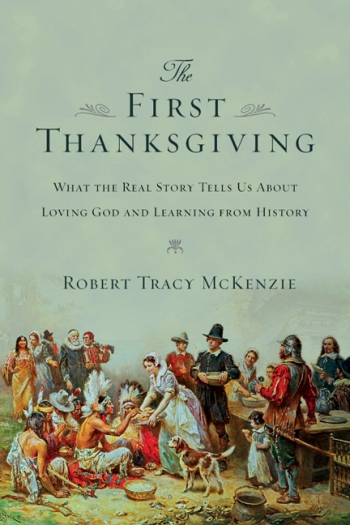
Robert Tracy McKenzie
InterVarsity Press
Softcover $18.00 (219pp)
978-0-8308-2574-5
Buy: Local Bookstore (Bookshop)
Claiming that the current American perspective on the pilgrims is idolatry, this historian has crafted a thought-provoking lesson on how to contextualize the past.
The Pilgrims are heroes admired for their bravery, commitment to religious freedom, and gratitude, but The First Thanksgiving asks us to examine the evidence to see if these claims are supported. Readers should think “Christianly and historically about the past,” argues McKenzie, a professor of history lauded for his work about the Civil War, particularly Lincolnites and Rebels: A Divided Town in the American Civil War. Thinking historically and Christianly involves relying on evidence and contextualizing while resisting the urge to idolize figures from the past.
In a conversational tone, McKenzie puts forth a compelling argument that might put the Pilgrims and their place in our national and spiritual consciousness on shaky ground. For example, sifting through the evidence that is available, beginning with sources like William Bradford’s Of Plymouth Plantation and letters and books written by others who visited or lived in the colony, the author challenges previously held ideas about Pilgrims, including the often cited reason for their arrival in America—religious freedom—and the cozy first Thanksgiving meal they supposedly had. According to several sources, there is debate about whether the Indians were actually invited or if they merely showed up—dashing the contemporary idea of a culturally inclusive community dinner.
While illustrating how to contextualize—a historian’s task that seeks to understand the historical background of a figure or occurrence—McKenzie explains the Pilgrims’ discontent with the Church of England while living in Scrooby and their subsequent immigration to Leiden, Holland, where they found religious freedom. After twelve years in Leiden, the Pilgrims decided to travel to America, perhaps to preserve their English customs. Once there, life was difficult, but with the sustenance left behind by a decimated Indian tribe and the help of Squanto, some of the Pilgrims survived.
The First Thanksgiving emphasizes the Pilgrims’ firm commitment to God and highlights beliefs today’s Christians might disagree with, such as refusing religious tolerance. Throughout the book, McKenzie uses carefully selected biblical scriptures to assure readers that history has a place in Christianity, but Christians must be careful not to place faith in historical figures or America. Instead, they should follow the Pilgrims’ lead and strive to make heaven their home. “One snare that awaits us when we study nonbiblical history is the temptation to fashion idols out of the admirable figures we encounter.” Christians fall prey to this when they view historical figures as sinless or as people to be emulated. Christians who embrace the strategies used by historians (e.g., examining evidence and contextualizing) that McKenzie skillfully teaches, may never view the past the same again.
KAAVONIA HINTON (August 31, 2013)
Alone on the Shield
A Novel

Kirk Landers
Chicago Review Press
Softcover $15.99 (384pp)
978-1-61373-991-4
Buy: Local Bookstore (Bookshop)
The Canadian borderlands, and their lakes, rivers, and portages, are rendered with a journalistic eye for detail.
Kirk Landers’s Alone on the Shield is an adventure story mixed with a love affair set deep in the Canadian wilderness. It speaks to midlife, twin urges to escape and to understand.
Gabe Pender’s life is not going well. He has recently divorced and been fired, and he has a simmering well of anger left over from the Vietnam War. Yet his character is written with welcoming everyman qualities that peer deep into the soul of America’s heartland.
Gabe has watched the rich get richer while his journalistic dreams flicker and die. His solution is to embark on a solo canoe trip into the northern boundary waters of Lake Superior and southern Canada, a land as dangerous and remote as Pender’s own heart.
As his journey progresses, Pender decides to intentionally leave behind his past in the hopes of opening an uncertain future. As with all hero journeys, though, meeting the future means dealing with the past. His is shaped by anger, but also comes with the possibility of forgiveness and love.
Pender may start his trip alone, but he hopes to spend some of his adventure with his long-lost college flame, Annette. Annette is a compelling character in her own right, having also found and lost herself. The pair decide to reconnect in the wilderness, despite her reservations.
The story is written with a journalistic eye for detail. The Canadian borderlands, and their lakes, rivers, and portages, feel very real. Pender’s days are filled with fish, paddles, and the threat of danger. He seeks escape from his past, but this hope is partially denied by the anger he carries inside him.
This is a searing portrait of a man suffering from depression, characterized by anger and occasional violence. The book effectively mirrors Pender’s internal struggles with the outside forces of nature. The wilderness offers possibilities for transformation and redemption.
A compelling mixture of adventure and romance, Alone on the Shield is a tightly focused novel that deftly speaks to growing older and the struggle for understanding.
JEREMIAH ROOD (October 27, 2017)
Thanksgiving 1959
When One Last Corner of New York City Was Still Part of Small-Town America and High School Football Was the Last Thing Guys Did for Love
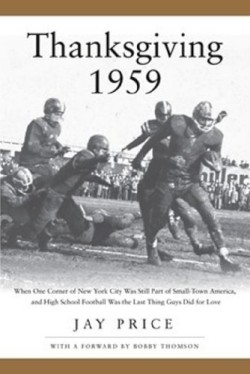
Jay Price
Mountain Lion Press
Unknown $24.95 (244pp)
978-0-9770039-3-8
“The Thanksgiving Day game between New Dorp and Curtis high schools was part rivalry, part high school reunion, part block party, as much a part of life on Staten Island as its namesake ferry,” author Jay Price writes. As the book begins, former students and colleagues fill St. Clare’s Church to say goodbye to the man who believed it was possible for anyone to fulfill his dreams as long as he worked hard and had a little direction.
Sal Somma, former player and New Dorp High School football coach, came from an Italian immigrant family. During the Great Depression, Somma quit high school to help support his family at a job paying twenty-seven cents an hour. When Al Fabri, Curtis High School’s coach, saw Somma play football in a neighborhood game, he convinced Somma’s father to let him go back to school, with the promise of a better paying job in the future and a possible col-lege scholarship.
Somma’s story is told within the context of his times and his blue-collar Staten Island neighborhood before there was a bridge linking the island to New York City. This was a time before television, before there were participation trophies for five-year-olds playing tee-ball; this was a time when “where kids were allowed to be kids and the guys played ball just for the love of it…”
Somma is only one of the colorful characters included in the book, which is full of historical narrative and anecdotes. Author Price makes the rivalry between the high schools come alive, especially the annual Thanksgiving Day game, around which family dinners were scheduled. What fuels the rivalry is the relationship between two long-time coaches, Andy Barberi and Somma, former teammates at Curtis High School in the early ’30s.
The setting of the 1959 game is a stadium that was a hodge-podge of wooden bleachers “shoe-horned into an asymmetrical space between a polluted creek, a railroad right of way and…the local Dodge dealership.” Every seat in the 7,500-seat stadium was filled an hour before game-time. The overflow crowd ringed the field, sat on the hillside and on top of the snack bar.
While the outcome must remain a surprise to the reader, Price does an excellent job of creating tension and suspense. His storytelling is excellent, his history impeccable. Sports fans, especially football fans, will enjoy this book, as will history buffs and people who just like a good tale.
Jay Price is an award-winning columnist for the Staten Island Advance. He has covered the World Series, the Masters, U.S. Open, Final Four and twenty-five Super Bowls.
The Sioux Chef’s Indigenous Kitchen
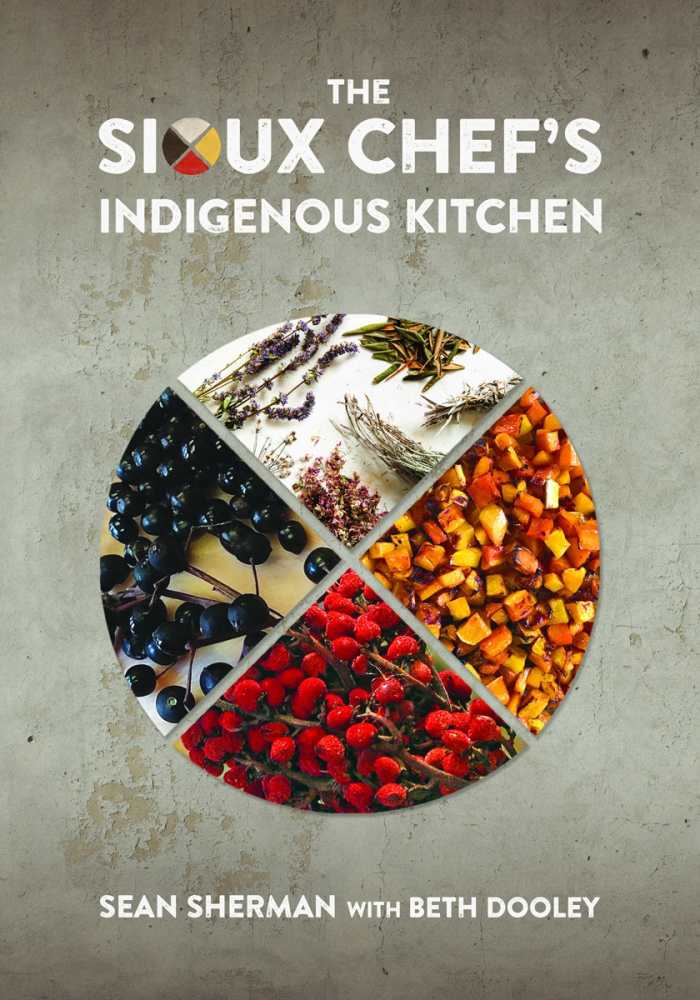
Sean Sherman
Beth Dooley
University of Minnesota Press
Hardcover $34.95 (256pp)
978-0-8166-9979-7
Buy: Local Bookstore (Bookshop)
There are cookbooks from which one simply cooks the recipes, and cookbooks like Chef Sherman’s, from which one learns how and why to cook.
Chef Sean Sherman’s The Sioux Chef’s Indigenous Kitchen is the culmination of years of research, professional development, and passion. It is a springboard from which a new and exciting field of cooking is developing—under Chef Sherman’s leadership and that of a handful of other chefs. The stories of those chefs are here too, along with their recipes.
One of the book’s best features are the informative sidebars scattered throughout. They cover topics ranging from the difference between locavore and trade-a-vore, to the centrality of beans in the indigenous diet, to the noble way to hunt.
Chapters are organized to reflect where ingredients are gathered. Chapters like “Nature’s Sweets, Teas, and Refreshing Drinks” remain true to indigenous roots—working without white flour, sugar, and dairy, and relying on traditional ingredients instead.
In “(Not) Fry Bread,” Chef Sherman lays out his vision for reclaiming indigenous food, observing the difficulty of culinary symbols that connect back to painful historical narratives. He suggests updating the story and returning to the healthy traditional foods of indigenous people
… and [to] the promise that we can stand up to the foods that have destroyed our health, the forces that have compromised our culture.
This is exciting work, from a professional perspective and otherwise. It showcases food as a focal point, bringing people together.
There are cookbooks from which one simply cooks the recipes, and cookbooks from which one learns how and why to cook. Chef Sherman’s book is in the latter. It is a cookbook meant to be studied, one where the recipes are not its most important feature, but rather a part of an overall call to reclaim the history and culture of indigenous peoples, beginning with a reclamation of their traditional foods.
Chef Sherman observes that controlling food is a means of controlling power. With this cookbook, he is taking that power and giving it back to its rightful owners.
ERIC PATTERSON (August 27, 2017)
Beautiful Ape Girl Baby

Heather Fowler
Pink Narcissus Press
Softcover $15.00 (300pp)
978-1-939056-11-5
Buy: Local Bookstore (Bookshop)
A unique blend of chutzpah and vulnerability mark this story of a girl born with the looks of an ape.
Irreverent, unconventional, and hyperreal, Beautiful Ape Girl Baby tracks an ape born to wealthy parents. Heather Fowler’s dark, humorous novel is both the story of a psychological experiment gone wrong and an aching portrayal of a seventeen-year-old in search of love.
Born with the looks and violence of a primate, Beautiful is raised on a compound that includes friends who are paid to praise her, designer clothes, and a mother and father who shield her with elaborate lies. No one dares risk her displeasure, so when she escapes on a road trip to meet her idol—radio host of the Strong as Animal Woman Show—it’s with the reckless confidence born of having never been held responsible for her impulsive behavior. Beautiful’s instincts cause mayhem, while her genuine belief in her own superiority colors her perspective.
With a complex character who casually quotes Audre Lorde, believes in the Russian expression toska, and spouts wisdom as only an outsider can, Beautiful is a strange figure. She’s a bibliophile loaded with insights, yet naive. She’s childish, awkward, unintentionally funny, honest, and despite her extremes, occasionally a normal, hormonal teen. The unique blend of chutzpah and vulnerability turns a wild premise into a moving tale of learning to live in the world.
Beneath the series of accidents and chance encounters lies a deeper tale of self-image and loneliness, choosing to stand out or blend in, and the power of nature versus nurture. Accompanied by her driver, Thomas, Beautiful meets people on the fringes, from an eccentric forty-nine-year old gangster dubbed Fedora Man to a drug-addicted, would-be thief. In one of the book’s smartest convolutions, Beautiful, who has undergone years of therapy herself, plays counselor to the adults she meets, with surprisingly persuasive powers.
Fowler spins classic themes of loyalty, betrayal, love, and protection in a dynamic plot. Beautiful’s gradual awakening to the truth about herself raises provocative questions on what it means to be animal or human.
KAREN RIGBY (May 9, 2016)
Love and Other Hot Beverages

Laurie Loft
Riptide Publishing
Hardcover $19.99 (400pp)
978-1-62649-597-5
Buy: Local Bookstore (Bookshop)
This novel includes a frank and important discussion of emotional relationship abuse.
How do you fit a hunky construction worker back into the closet? Very carefully. Todd is recently brokenhearted, out of a tough relationship, and in Colorado. He misses queer culture: home meant “working construction, meant pretending to his parents that he had a girlfriend, meant shame and guilt and inward seething.” Translation: not fun.
The one thing that lightens his days is Sebastián, the office boy at his work site. Brought together by their love of good coffee—not to mention some sexual attraction—the two men begin a relationship. Are they in it for each other, or is it just an escape from their toxic exes? Love and Other Hot Beverages is an emotional M/M romance that takes on heavy themes of emotional abuse in LGBTQ relationships.
As Todd and Sebastián sift through their respective emotional baggage and their attachment issues, their sexual attraction deepens as well. In one particularly moving scene, Todd leaves an Al-Anon meeting, only to find that his ex is ready to try dating again. Parents, coworkers, and friends add a nice, nontraditional angle to this romance.
Characters do not always ring true, though the author strives for authenticity, and characterizations are sometimes heavy-handed and stereotypical. This undermines the plot’s emotional arc and can make sex scenes feel clinical and flat.
Importantly, Love and Other Hot Beverages includes a frank discussion of emotional abuse in LGBTQ relationships, and the fallout of either leaving them or staying in them. Todd and Sebastián both grapple with the push-me-pull-you dynamic, all along reaching for something better within themselves and in each other.
CLAIRE FOSTER (June 27, 2017)
Sweet Revenge
Passive-Agressive Desserts for Your Exes & Enemies
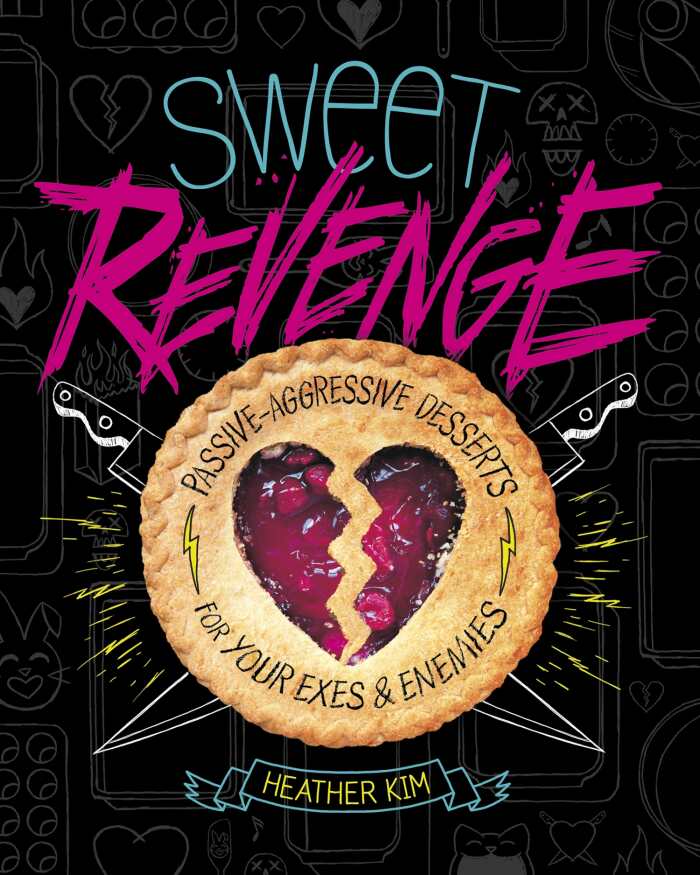
Heather Kim
Capstone
Softcover $19.95 (208pp)
978-1-63079-089-9
Sweet Revenge is a book on a mission to help teenagers find a way to better express themselves when they are hurt—with dessert!
Sweet Revenge is a mischievous cookbook that is equal parts gratifying, tempting, and hilarious.
A heartfelt message at the beginning of the book sets the tone: this may be a passive-aggressive cookbook, but there is no lurking scheme to cause harm underlying its recipes. Instead, Heather Kim asks that teenagers take their angry feelings and turn them into something that will put good into the world, rather than bad. In Kim’s estimation—contrary to the common misconception—“Revenge is a dish best served warm.”
The cookbook is exceptional for its thoroughness, which keeps in mind that many teenagers may not have much experience in the kitchen. It cautions about avoiding burns, provides a handy conversion table, and depicts useful kitchen tools for the beginner to familiarize themselves with.
The recipes are all delightfully named, with puns and plays on words such as You’re the Devil Food Cake and Stop Texting Me, You Crepe; each shows exactly what the baker thinks of their intended target.
Instructions are clear and easily comprehensible, making use of friendly and amusing language and slang. Beating your anger out into a batter is an essential instruction in many of the recipes. The tone is that of a friend, full of exuberant energy and lots of baking knowledge, eager to help the reader transform their aggression into the perfect dessert.
Pictures are artfully crafted, with excellent angles to showcase the sweet treats to their best advantages. A slashing font and colorful lines decorate the baked goods, resulting in treats that appear fierce as well as delicious.
Amid all of its fun and tastiness, Sweet Revenge is a book on a mission to help teenagers find a way to better express themselves when they are hurt—with dessert!
HANNAH HOHMAN (November 15, 2017)
Scalping Columbus and Other Damn Indian Stories
Truths, Half-Truths, and Outright Lies
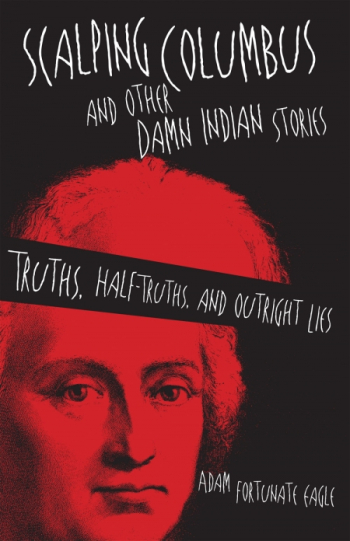
Adam Fortunate Eagle
University of Oklahoma Press
Softcover $19.95 (216pp)
978-0-8061-4428-3
Buy: Local Bookstore (Bookshop)
Fortunate Eagle’s battle for Indian rights is always tempered with humor and humanity—his strength is that he makes the reader laugh while he also proves a point.
Adam Fortunate Eagle shares a lifetime of Indian culture—tales true, false, and everything in between—in his amusing and enjoyable Scalping Columbus and Other Damn Indian Stories.
Fortunate Eagle, writer, sculptor, and activist, has been involved in many notable civil-rights battles on behalf of Native Americans, including the takeovers of Alcatraz in 1964 and 1969. He is the author of Heart of the Rock: The Indian Invasion of Alcatraz and Pipestone: My Life in an Indian Boarding School. In Scalping Columbus, Fortunate Eagle shares his anecdotes casually, with a playful, mischievous sense of humor that often leaves the reader unsure of what is true and what’s not. Fortunately, Fortunate Eagle supplies an end-of-book guide to how much of each story is true, fabricated, or embellished.
The title story, “Scalping Columbus,” features Fortunate Eagle, with ever an open eye for Indian positive-image publicity, participating in a Bay Area Columbus Day celebration. After being slighted, he pulls the wig off the actor playing Christopher Columbus in a re-enactment of the discovery of the New World—thus “scalping” Columbus. A few years later, Fortunate Eagle capitalizes on a trip to Rome by “discovering” Italy, another humorous but pointed statement about the treatment of Native Americans: “To my delight I found no historic reference that Italy had been discovered by anybody. My sense of logic and reason kicked in. If an Italian can lay claim to discovery of the Americas, with a native population estimated at eighty million in North, Central, and South America, then an American Indian should be able to discover a land called Italy.”
There is also a fascinating account of Fortunate Eagle’s role in the Patty Hearst saga, but the book is not all civil-rights battles or stories that carry historical significance; there are many that simply aim to entertain, even as they illuminate “Indian wisdom.” As if readers were sitting and listening to Fortunate Eagle around a campfire or at a powwow, his voice comes through as intimate and genuine, and even though this means dialect usages that are occasionally a bit strange, grammatical errors like using “drug” for “dragged,” or jokes that sometimes misfire, they add to the overall experience nearly as much as they detract.
Scalping Columbus makes it clear just how Fortunate Eagle has charmed so many people over the years—by being himself. Funny, honest, unpredictable, Fortunate Eagle is a master storyteller, and Scalping Columbus proves it.
PETER DABBENE (February 27, 2014)
Hannah Hohman
